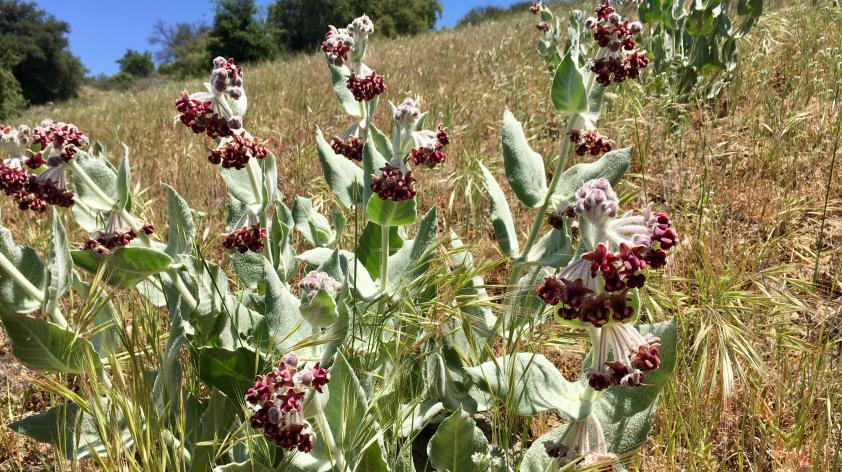
Reaching New Heights
From sea level to a height of 6,535 feet at the top of Hot Springs Mountain, San Diego County offers such diverse habitats that it’s no wonder we have more plant taxa found in our county than in any other county in the United States. We have plants that are specially adapted to sand and saltwater spray, mountaintops covered in winter snow, desolate parched deserts, and everything in between. Our vernal pools, pine forests, and rocky river-washes all support different plant communities and subsequent pollinator, bird, and predator communities.
I’ve mentioned in previous blogs that this year has been particularly challenging for our plant communities, having received little rain in the winter of 2017 and spring of 2018. Luckily, our county is so diverse there will always be some habitat that’s resilient to the annual ebb and flow of precipitation.
This year we hiked up. It’s surprising what a little elevation can do for measurable precipitation levels. Year to date, Lindbergh Field in downtown San Diego, at an elevation of just 17 feet, has received 3.34 inches of rain. Just 35 miles away however, Cuyamaca Mountain, at an elevation of over 6,000 feet, received 14.60 inches of rain. Our higher elevations consistently receive more rain, and have longer, cooler springs, which slows evaporation and keeps the soil moist.
In many of the lower parts of our county, annual plants did not sprout this year. Vernal pools never filled with water. Many plants that did flower did not have the water reserves to produce seeds. Early this season we realized that we would have to climb into the higher elevations of our county to make some progress conserving rare plants. We spent much of our time around Julian this year, as well as some mountains in the south of the county, and we were able to make some very important seed collections.
Astragalus oocarpus, known as the San Diego milkvetch, is in the pea family (Fabaceae). This species is only found at high elevations in San Diego County, and there are roughly 55 known populations. As a result of its small range, human development, and the potential for range constriction due to climate change, it is designated a G2 species – imperiled throughout its global range. This plant has feathery green leaves on red tinted stems, and clusters of custard yellow flowers. It is very popular with bees, especially bumblebees, and makes big seedpods that rattle when shaken. We found a population at an elevation of about 4,500 feet above sea level. Though still showing some signs of drought stress, these plants produced plenty of seeds to support a collection. Seeds from this species have never been conserved ex-situ before, making this a significant seed collection.
Grindelia hallii is another species we collected at higher elevation. San Diego gumplant is also only found in San Diego County. There are around 60 known populations, and we made a seed collection from two different populations this year, from locations between 4,200 and 4,500 feet above sea level. This species is in the sunflower family (Asteraceae) and has typical sunflower-shaped, small yellow flowers. The buds of this plant are covered in a sticky, sweet smelling resin, as the name implies, and the genus has long been used as an herbal remedy for colds and coughs.
As with most sunflowers, this species attracts many different pollinators, mainly bees and butterflies. The species is also designated a G2 species, for the same reasons as the milkvetch discussed above. San Diego gumplant is another species that has never been conserved ex-situ, making our two seed collections an important first step in the long-term conservation of the species.
San Diego County is very larger and very diverse. There is always something beautiful blooming, some unique habitat thriving, some amazing natural process occurring. You just need to know where to look. We are proud to be working toward the conservation of this special corner of the planet, conserving our local flora, and striving to end extinction in San Diego.













